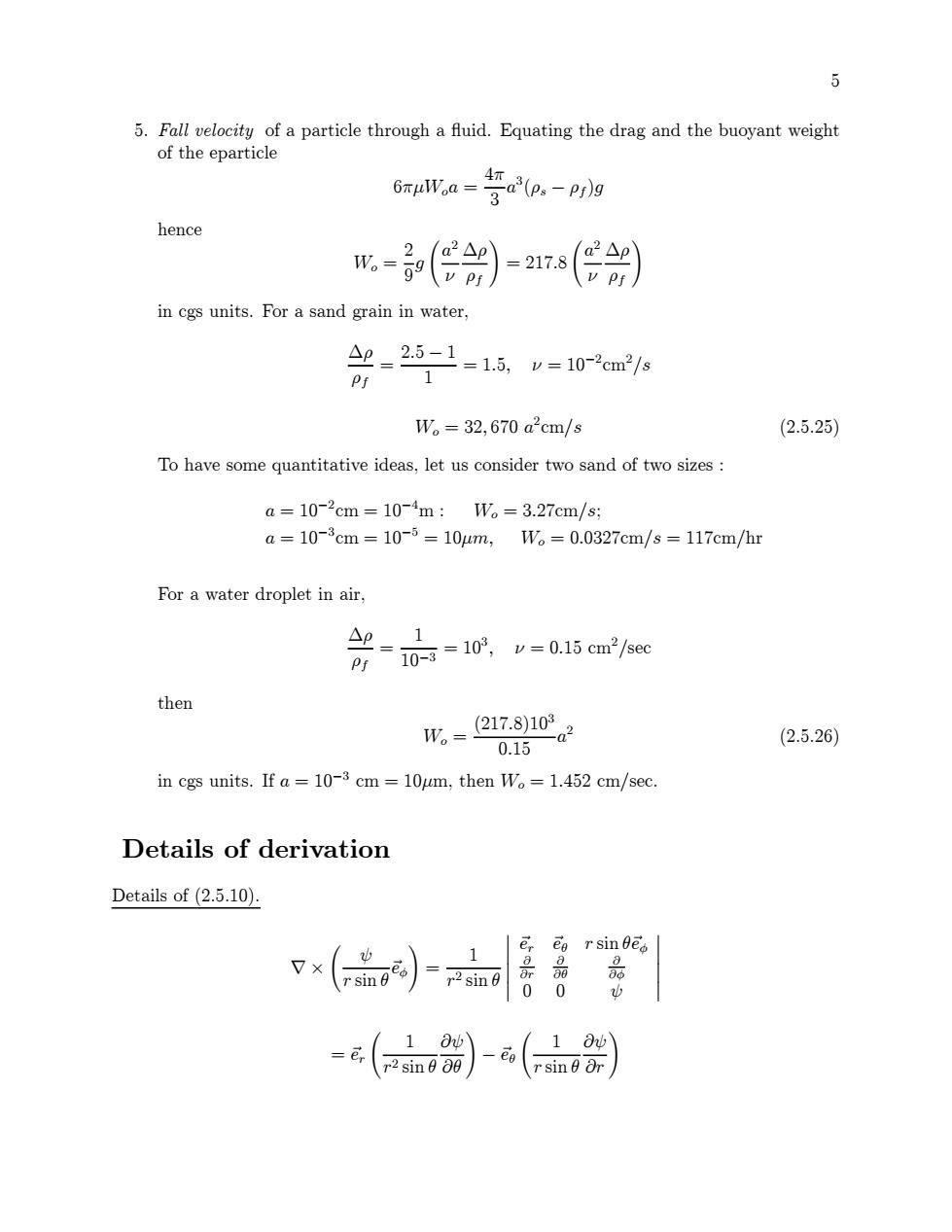正在加载图片...

5 5.Fall velocity of a particle through a fluid.Equating the drag and the buoyant weight of the eparticle 6iwa=行en.-pn9 hence 2a2△ 217.8 "Sp v Pf in cgs units.For a sand grain in water, =1=1.5,v=10-2cm2/5 △2=2.5-1 W。=32,670a2cm/s (2.5.25) To have some quantitative ideas,let us consider two sand of two sizes a=10-2cm=10-4m:W。=3.27cm/s; a=10-3cm=10-5=10um,W。=0.0327cm/s=117cm/hr For a water droplet in air, 2=1 10-=103,v=0.15cm2/sec then -0 (2.5.26) in cgs units.If a 10-3 cm 10um,then Wo =1.452 cm/sec. Details of derivation Details of(2.5.10). 1 eo rsin beo r2 sin0 品 品 0 0 1. ∂b 1 =e r2 sin 0 00 rsin0 Or5 5. Fall velocity of a particle through a fluid. Equating the drag and the buoyant weight of the eparticle 6πµWoa = 4π 3 a3 (ρs − ρf )g hence Wo = 2 9 g à a2 ν ∆ρ ρf ! = 217.8 à a2 ν ∆ρ ρf ! in cgs units. For a sand grain in water, ∆ρ ρf = 2.5 − 1 1 = 1.5, ν = 10−2 cm2 /s Wo = 32, 670 a2 cm/s (2.5.25) To have some quantitative ideas, let us consider two sand of two sizes : a = 10−2 cm = 10−4 m : Wo = 3.27cm/s; a = 10−3 cm = 10−5 = 10µm, Wo = 0.0327cm/s = 117cm/hr For a water droplet in air, ∆ρ ρf = 1 10−3 = 103 , ν = 0.15 cm2 /sec then Wo = (217.8)103 0.15 a2 (2.5.26) in cgs units. If a = 10−3 cm = 10µm, then Wo = 1.452 cm/sec. Details of derivation Details of (2.5.10). ∇ × Ã ψ r sin θ ~eφ ! = 1 r2 sin θ ¯ ¯ ¯ ¯ ¯ ¯ ¯ ~er ~eθ r sin θ~eφ ∂ ∂r ∂ ∂θ ∂ ∂φ 0 0 ψ ¯ ¯ ¯ ¯ ¯ ¯ ¯ = ~er à 1 r2 sin θ ∂ψ ∂θ ! − ~eθ à 1 r sin θ ∂ψ ∂r !